A common problem of bonsai in early stages of development is that large branches extend from the trunk all the way to the edge of the tree’s silhouette. This is especially true for material that was grown in the ground.
That’s the case for the chojubai pictured below. Although a number of small branches are beginning to fill in the silhouette, many scaffold branches are still too long.

Japanese flowering quince, ‘chojubai’
My goal for the tree is to improve the ramification by reducing the scaffold branches so they can divide into secondary and tertiary branches as they extend toward the edge of the silhouette.
How to proceed? First, the tools:
- Large wire cutters
- Pliers
- Small wire cutters
- Concave cutter
- Knife
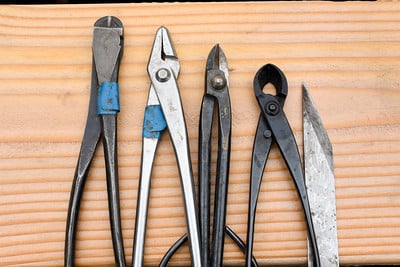
Basic tools
Below is a photo of a long and uninteresting branch – uninteresting because there’s no branch division and it’s mostly straight.

Branch to be reduced – tape marks the spot
Here are the steps:
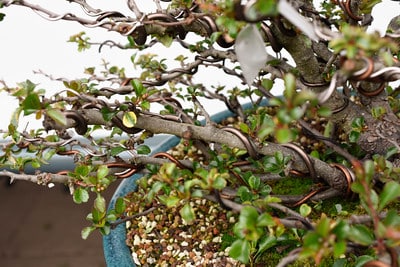
1. Remove wire as necessary to expose the area to be cut
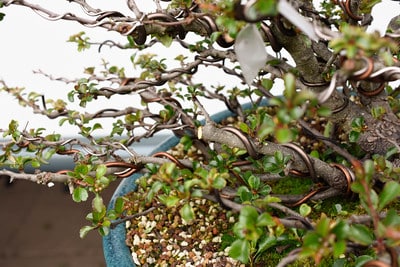
2. Cut the branch
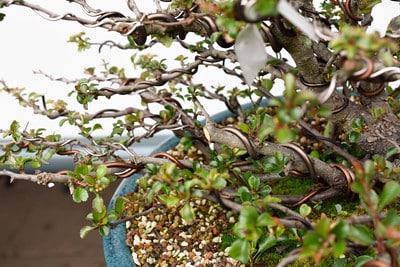
3. Use concave cutter to improve the angle of the cut and knife to clean the wound
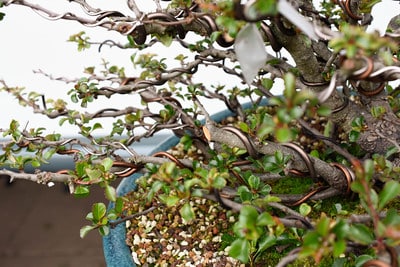
4. Apply wound sealant like Top Jin (pictured here) or cut paste
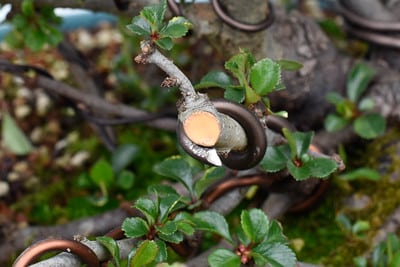
Close-up of finished cut
I always aim to make the cut above a side-branch to introduce movement and reduce die-back. Cutting back between internodes is only appropriate for varieties that bud readily, but I typically avoid this approach unless necessary.
After reducing about six large branches, I shortened some of the smaller branches that extended beyond the basic silhouette.
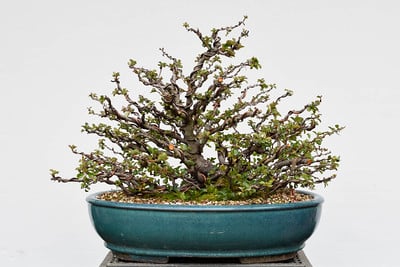
After cutback
Despite the size of the branches I removed, the effect was negligible because these branches didn’t have many side branches or support much foliage. This is especially true on the right side of the tree which remains congested. I’ll continue opening up this area next year when there are better side branches to cut to.
Why wait until spring? Because these cuts are large, I like to make them when the tree is growing quickly and when the bulk of the growing season lies ahead. Making large cuts near the end of the growing season or when the tree is dormant may lead the wound to dry out and retard healing.
What’s the best thing about doing cutback on chojubai? The cuttings!

Chojubai cuttings
I’d love to see more chojubai bonsai in the future so I start them whenever I can. I’ve found they root easily in bonsai soil or the sand and perlite mixture used above.
Subscribe to Bonsai Tonight
New Posts Delivered Every Tuesday and Friday
nelibonsai says
Have you kept some suckers also? I am not sure if they are low branches or suckers. Would you consider this single trunk?
Jonas Dupuich says
I think of the tree as more of a clump-style as there are many smaller “trunks” in addition to the primary trunk. These other trunks were likely suckers at one point. Now when suckers appear I remove them.